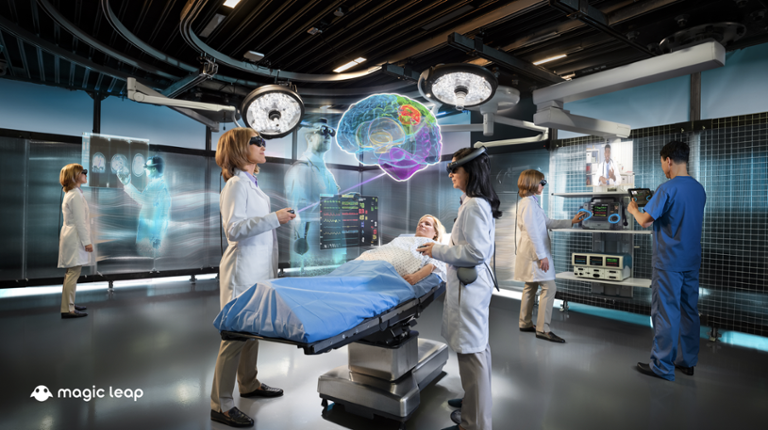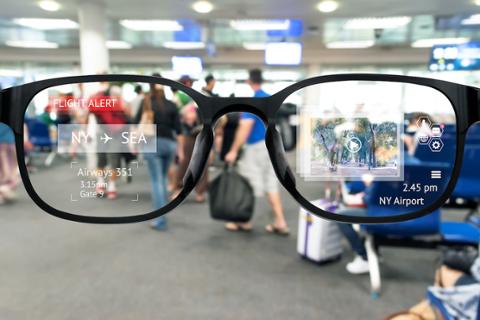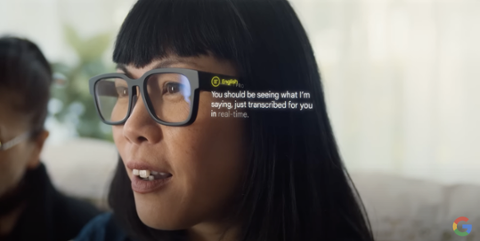Many industries have no choice but to adopt newer tech advancements. For some, it's been a bitter pill to swallow, but those who can embrace adaptation and modernization will see that it’s vital for survival.
We've seen 3D printers help architects print concrete models for optimal project visualization, and robots are now doing the job of a concierge in many hotels across Japan. But one industry that hasn't felt the ground shake beneath it for many years is human resources (HR).
For decades, HR has been managed from the employer down. It's stuck in its self-created world of complacency, and it’s clear that the industry needs to be shaken up, and employers need to find ways to stand out from the get-go. Companies should implement immersive tech in their onboarding and training process as a form of more profound connection with their employees.
What Is Immersive Tech in HR?
Online self-paced learning, which utilizes PDF or video software, boomed in popularity during the pandemic. But these learning processes have a high dropout rate, whereas we see a much lower 25 percent when the content is delivered face-to-face. How can we bridge the success gap between remote learning and in-person learning? It begins by creating modules that require engagement to progress forward.
Humans learn better when they're genuinely engaged in an activity. Traditional digital learning within the workplace mainly consists of a PDF handbook or training videos, similar to self-paced learning, which has a significant failure rate. New hires click their way through mandatory, borderline-boring information as opposed to being excited and motivated to begin their new role in your company.
However, immersive technology in HR aims to bridge the gap between the physical world and the digital, creating unique experiences that are easily accessible and highly engaging without the need for expensive virtual reality (VR) headsets, via the use of augmented reality (AR) cameras.
The user can access workplace simulations and complete onboarding modules through devices available at home, such as an iPhone or laptop, ensuring a smooth and easy training process at the click of the 'send' button.
By leveraging this technology, we can create immersive modules intentionally crafted as alternative experiential learning methods that simulate the workplace. So, how exactly can companies shape their HR department with this newer technology? Here are three easy ways to start implementing immersive tech in HR.
Set Expectations Before Firing off an Application
Prospective employees spend hours scrolling through countless opportunities available online. They skim over the blurbs that explain daily expectations, the role and qualifications. If they're lucky, there may be a small paragraph explaining a 'typical day’ at the office.
Today's employee crisis calls for employers to ensure they stand out from the crowd by offering workers what they want up-front: modern workplaces that value those they've chosen to be on their team. With immersive HR, prospective job seekers aren’t just amazed by a workplace willing to move forward in the technological age; they also have the opportunity to immerse themselves in easily accessible modules that set up the prospective employer in a great light.
The projective turnover rate in the U.S. is estimated to jump nearly 20 percent from pre-pandemic levels. Therefore, employers must make an extra effort to retain those they've just spent time and money bringing onboard.
For example: A Canadian forestry company, CANFOR, was losing laborers within just a few short weeks of the contract commencement due to the surprise of working with loud and invasive tools that were unique to the company and industry. Employees were quitting because they were surrounded by machines of a very loud and invasive nature. Although this was mentioned in the brief of the job, most applying were unaware of the intensity of the day-to-day role.
By applying a pre-application onboarding module via job posts, prospective employees of CANFOR could have complete clarity of what they were getting into before applying.
Immerse New Employees in Busy On-Site Environments, off the Floor
In busy and notoriously understaffed industries such as hospitality, onboarding modules can immerse new hires in a dynamic environment before experiencing the real-life equivalent.
With 78 percent of restaurants in the U.S. not having enough staff to match current customer demand, hospitality venue owners are left the most vulnerable to the current climate. They must implement specific practices to retain staff and be able to meet customer demand quickly.
By implementing immersive tech, hospitality owners can create modules similar to real-life, busy restaurant service hours so the employee can get comfortable working the floor before dealing with real customers.
They can familiarize themselves with the basics that one would usually have to learn on a stressful and busy first shift, such as the point of service system, the location of specific cutlery or glasses, where to run dirty dishes or even the table maps, and what their numbers are.
By allowing new hires to be comfortable with the environment and how your restaurant or bar works in advance to deal with customers head-on, they can remain calm under the pressure of an active service as they already harness of vital knowledge of knowing where everything is and how the service works.
Run Employees Through Occupational Health and Safety Off-Site
Up north in the Canadian province of Ontario, employers saw a whopping $1,013 cost per employee for occupational health and safety onboarding.
When a laborer arrives on the first day of a new construction site (which for many contractors can even be a weekly affair), they will spend hours going through drawn-out explanations on how specific machines work and the site's safety procedures. Training staff in safety procedures costs employers time and money, as senior employees must take time out of productive work days to train new hires.
By running the employee through a series of occupational health and safety modules before coming on-site, the worker can show up on their first day of work and start immediately, producing a higher productivity rate per employee.
Overall, companies implementing immersive tech in their hiring and onboarding procedures are looking for ways to connect with staff, gaining higher retention rates and employee happiness in the process. In theory, this results in declining staff turnover, and makes their workplace one that the workforce wants to immerse themselves in.
PDFs, video modules, and PowerPoint aren’t enough in today's world. The newer workforce wants change. Immersive tech is for companies that want to evolve and connect with the workforce in a more genuine and modern way.
Jose M. Azares is Founder and CEO at NIDUM.



